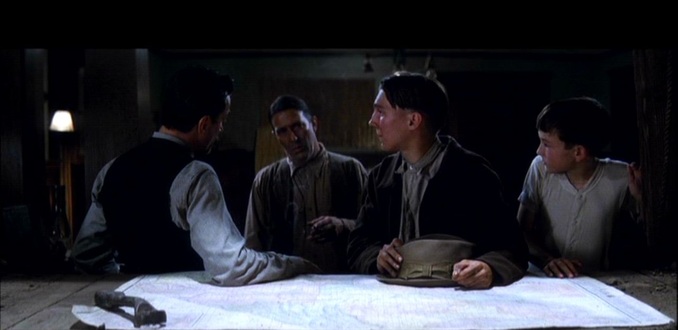It's Just... Television
Let me say up front that I think Anthony Hopkins is a fantastic actor. I haven't had a chance to see Westworld, either, so it's entirely possible I'd think it's a great show. But I don't think this scene deserves the praise that the Nerdwriter gives it here:
In a video that is supposed to show the abilities of Hopkins as an actor, I can't help but wonder what might have been. I'm unable to see the whole scene beyond what's in the video above, but it doesn't look like it's been staged to highlight his talents.
We get a few repeating set ups: close-ups of each character, a perpendicular two shot of the whole table, and some inserts of things in the distance that they're looking at. There's little interplay between foreground and background action. Each shot shows us essentially One Important Thing: Hopkins says a line. Sidse Babbett Knudson reacts to it. She stands up and looks off-screen. We see a portion of the landscape that she's looking at.
The vast majority of television is shot like this. The vast majority of movies are shot like this.
It's not bad. But it can be limiting.
When an actor is sitting down, half their body (or more) is out of view. But wait! you cry, People sit down all the time!
That they do. Especially in movies and on TV.[ref]It's worth remembering that television was originally a lot like radio, but with pictures.[/ref] How many scenes on Westworld or Game of Thrones or Mad Men or Breaking Bad or The Marvel Cinematic Universe are just conversations with people sitting down?
And almost all of these scenes are shot the same way: Master wide, matching close-ups, inserts as necessary. We don't see actors perform with their whole bodies, we see a succession of talking heads.
Yes, they are expressive heads. Anthony Hopkins' face flicks through dozens of emotions in quick succession. But humans are naturally drawn to look at faces. We can notice changes in expression even when the shot isn't a close up.
As an alternative, I'll refer you to a scene from There Will Be Blood, as analyzed by David  Bordwell. It plays out in a single wide shot which includes four characters. We can see everything that happens on each of their faces- Paul Thomas Anderson's direction and the actors' performances have guided our attention to all the important information.
Bordwell. It plays out in a single wide shot which includes four characters. We can see everything that happens on each of their faces- Paul Thomas Anderson's direction and the actors' performances have guided our attention to all the important information.
We can even see Daniel Day-Lewis exchange a glance with his assistant, Ciarán Hinds, while Day-Lewis has his back turned.
Everything culminates in a big, threatening handshake. Because it's so jarring compared to the rest of the shot, our eyes jump right to it. No need for a big close up.
Don't believe me? Psychological researcher Tim Smith used eye tracking software to follow where people's eyes moved as they watched the scene.
There Will Be Blood with gaze locations of 11 viewers from TheDIEMProject on Vimeo.
The Westworld scene has a great climactic image, too: One of Hopkins' robotic waiters freezes at his direction while filling a wine glasses. The glass over flows, staining the white tablecloth a bloody red.
Except instead of letting this image play out in one shot, highlighting the stillness of the waiter and the spreading stain, we have to cut between two close-ups, an insert of the cup, and the master wide, with all the players of the scene. The wide shot, the only one we really need to sell this moment, is up for just a couple of seconds before we cut to yet another shot.
I realize I must sound like a curmudgeon. Damn teenagers with their loud rock music and movies with too many cuts in them.
But if this is supposed to be the best thing on television, why does it look like everything else?
